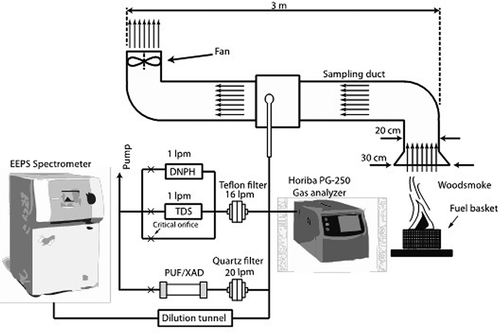Figures & data
Table 1. General form of analysis of variance used to test effect of polyethylene plastic on emission factors produced by the burning of manzanita (Arctostaphylos sp.) wood
Figure 1. Examples of fuel beds of manzanita (Arctostaphylos sp.) wood and low-density polyethylene plastic: (a) 0.25 wt% PE and (b) 2.50 wt% PE.

Table 2. Emission factors of selected components measured from burning mixtures of manzanita (Arctostaphylos sp.) wood and LDPE in g/kg CO2; other references in g/kg fuel burned
Table 3. Estimated emission factors of alkanes, cycloalkanes, alkenes, cycloalkenes, diolefins, and monocyclic aromatic hydrocarbons produced by the burning of manzanita (Arctostaphylos sp.) wood-polyethylene plastic mixtures in mg/kg CO2
Table 4. Gaseous emission factors for polyaromatic hydrocarbons (PAH) from the burning of manzanita (Arctostaphylos sp.) wood/LDPE mixtures (mg per kg CO2)
Table 5. Emission factors for aldehydes and ketones from the burning of manzanita (Arctostaphylos sp.) wood–LDPE mixtures derived from 2,4-dinitrophenylhydrazine (DNPH) coated silica cartridges; units are in mg/kg CO2
Figure 3. EFPM is plotted versus reconstructed PM mass based on the emission factors of elemental carbon (EC) and organic carbon (OC); solid line shows the regression line with slope 1 and correlation coefficient of 0.87.

Figure 4. Contour graphs shown for two different PE contents: (a) 0.0 wt% PE and (b) 2.5 wt% PE. The data were captured using a model 3090 engine exhaust particle sizer (EEPS).


